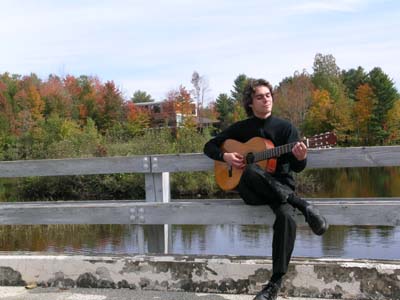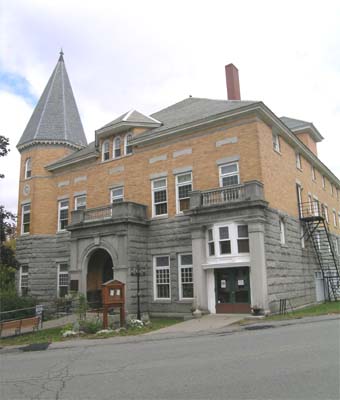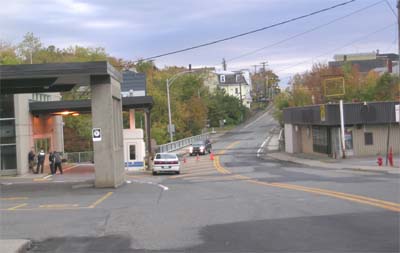
Destination Canada: October 27, 2004
Wandering At Will in Québec's Eastern Townships
This webpage is a Talkin' Travel post-broadcast resource service for the listeners of the show. If you heard the segment on the Eastern Townships (Les Cantons de l'Est) or are interested in travelling here, the information and links given below will help you plan an itinerary.
Destination Canada is a regular feature on Talkin' Travel (http://www.ttrn.com/).
The Townships Paradigm
As I meander here and there in the Eastern Townships on a radiant fall day, I feel no urgency or compulsion to "arrive." Although I take whichever turning in the road strikes my fancy, I also do not feel my excursions are aimless; around each curve or just over the next rolling hill there is another poetic moment in one of the richest landscapes I have experienced in Canada. In the Eastern Townships — in French Les Cantons de l'Est, a destination replete with meaning and a quiet purposefulness — the visitor is engaged on many levels.
Free to go where I want, I become absorbed in this magnificent rural and small town environment. And each time I set off in a new direction, or make a sudden stop for another "perfect shot," I find myself murmuring "À volonté," an expression I learned many years ago in Québec.
In French à volonté (at will) is as free and nuanced as the state of mind it suggests. To travel or respond to life à volonté, for example, means to act spontaneously, indulging in whims, caprices, and trusting your intuitive sense — in brief to be free to go where your heart leads. This is the essence of the Eastern Townships.
But volonté also suggests free will and the courage, confidence, and self-determination that it engenders. I am reminded of the 18th-century French philosopher Jean-Jacques Rousseau who said, "Le principe de toute action est dans la volonté d'un être libre." ("The fundamental principle operant in every human action is the will of a free being.") Although Rousseau was at times rather ambiguous in his writings, he has had a lasting effect on philosophical thought by emphasizing an emotional and passionate side to human beings as well as the rational. It is important to note that he also said "Never exceed your rights, and they will soon become unlimited." Rousseau could have been talking to the people of the Eastern Townships where having choices and making carefully considered choices is a way of life.
Nucleate patterns
Here in the eastern Townships, you might think you were in New England if it weren't for the French language. The rolling hills, rich agricultural land, and cohesive communities (an hour south of Montréal) flow along the borders of New York State, Vermont, New Hampshire, and Maine.
Part of the Appalachian range, the area was originally a rich hunting and fishing territory for the Abenaki people but remained relatively unsettled until shortly after the American Revolution when a significant number of American colonists who supported "the King" moved into the area. These "United Empire Loyalists" had spent the war either in specially created British military corps, in strongholds such as New York City, or in refugee camps. Half of those who eventually fled (between 40,000 and 50,000) came to Canada when their sympathies for the British Crown brought them into serious conflict with those who supported the new republican cause.
These new Canadians (in particular those who moved into the Eastern Townships area) brought with them much of their previous lifestyles in terms of architecture, land practices, and cultural values, although most of their possessions were confiscated when they left. The main waves of Loyalist immigration to Canada occurred between 1783 and 1784. Many were generally of fairly high social and economic standing. Many were also farmers or free blacks who had served in the Loyalist corps. In the Eastern Townships today, a region in which genealogy and historical preservation are highly valued and practised, you encounter everywhere place names, family names, and many historical buildings and references that have their origins in the United States.
In certain areas especially — such as the idyllic town of Stanstead on the Québec-Vermont border — there is a close identification with the United States that has resulted from a common history and geography. In peaceful Stanstead where in previous decades children would skip from one side of the border to another to visit friends or to buy an ice cream cone, there is the least day-to-day cultural differentiation that I have ever seen along "the world's longest unfortified border."
In the 1820s and 1830s the residents of Stanstead were actually quite politically favourable to republicanism. But this attitude in the Eastern Townships in general had undergone a relatively quick flip flop. After the War of 1812, a war that officially was between the U.S. and Britain but focussed on the colonies, "Yankees" (as they were righteously referred to) did come to represent "everything bad." But the fact that this part of Québec was reconfigured on what was in essence a New England township model, eventually negated such anti-American feeling. As I soon learn in the Eastern Townships, landscape is history.
And here too that special Canadian "sense of place" is felt. The area resonates with aspects of the subdued Canadian identity; the impact of proximity to the U.S. and the challenge of differentiating between what really is a "Canadian" and an "American." It is also an area in Canada where the border seems quite negligible — an evening stroll I take down Stanstead's main street takes me over a short bridge and into the U.S. Although I feel no great transition in those few steps, I am of course very aware that there are profound socio-cultural and political issues and beliefs that do indeed differentiate our two nations, but on a person-to-person or town-to-town level, the issues begin to dissipate.
Although early English-speaking settlers were of American, Irish, English, and Scottish roots, after 1840 the region saw a wave of French-speaking colonists arrive from other parts of Québec. By 1881 they were already the majority. In the 20th century, more demographic change occurred and today the English-speaking community in the Townships is only between 10-12 per cent. Part of the result of this early immigration pattern is that the Eastern Townships are one of the most bilingual areas of Québec I have visited, in addition to being one of the most unique from an historical point of view.
Perhaps the most common element between New England and the Eastern Townships is the small town-centred model of rural communities (townships) which contrasts with the seigneurial system that initially was introduced to New France in 1672 by the very powerful man-behind-the-French throne, Cardinal Richelieu.
Under the seigneurial system land was arranged in long strips (seigneuries) along the major rivers, primarily the St. Lawrence. The land of course belonged to the seigneur who divided it among his tenants. The latter worked the land, built houses and other buildings but worked for their seigneur three days a year on such projects as building roads. Although this system had its roots in European feudalism (seigneurs here were still vassals to the French king but by law were not allowed to be absentee landlords), in New France it had a greater incentive for settlement and colonization than in Europe. The seigneur had both real and honorary rights: he could establish a court of law, operate a mill (which his tenants were obliged to use for grinding grain), establish a commune, issue hunting, fishing, and woodcutting licences, and collect various forms of taxes from his tenants.
And when England defeated France at the Battle of the Plains of Abraham in Quebec City in 1759, the English kept the seigneurial system for almost a century although lands tended to pass into the hands of successful habitant farmers, and members of an emerging new professional or merchant class. However, as a new North American society developed, eventually the system and its vestigial feudalism would be abolished in favour of the township system. More closely identified with the French Régime, the seigneurial system deeply influenced the evolution of Québec society where land was the principal patrimony but in areas more closely related with the English-speaking American colonies, the township concept was the major social structure.
The squared settlement patterns here (primarily a 19th-century land use plan) led to a higher density of villages, each of which also was formed around the town square. This eventually led to a social infrastructure that intensified human interaction at the "town square" level, often because the first settlers were quite isolated from other communities. But with the coming of roads and railroads, the towns all became interlinked, forming cohesive townships. I suspect that the renowned urban planner Jane Jacobs (who now lives in Toronto) would approve of the immediacy of human contact that such planning creates. I also suspect she would say that the same principles could apply in large metropolitan areas.
The not-so docile Loyalists
Depending on who you talk to or what historical record you read, you get slightly different versions of the Loyalist experience. The mythologization and romaticization of history is also a theme I discuss with Louis-Georges Harvey, professor of history at English-speaking Bishops University in Lennoxville. The Loyalist migration to Canada did indeed set a tone and reaffirm a strong pro-British ideology in Canada. But for some historians, the Loyalists (especially in Upper Canada) were quite successful in adapting to a new political reality. They were certainly political refugees, but according to some sources they were privileged refugees in terms of the land grants and other financial assistance they were given. Many were also politically quite astute having been front and centre in political protest in the former American colonies. Three of the main areas of settlement of Loyalists were along the St. Lawrence around Kingston and the Bay of Quinte, in the Niagara peninsula, and near Detroit. These particular settlement areas were intended to be bastions of defence in the event of war with the new republic to the south. In terms of Loyalist settlement, the Eastern Townships experienced a quieter transformation.
What is underscored in the Loyalist experience however is the disconnect that can occur when passions run high and people are or feel displaced (even in retrospect), a theme that of course runs throughout all human history.
Why the Eastern Townships?
In 1791 the British Parliament passed the Constitutional Act which divided the old "Province of Quebec" into Upper Canada in the west (the predecessor of today's province of Ontario) and Lower Canada in the east (along the present-day Ontario-Québec boundary). The Eastern Townships of Lower Canada were thus differentiated from the Western Townships of Upper Canada. This Act was a also a clear response to the "excess of democracy" in the former colonies to the south. In each new province, a lieutenant-governor, an executive council, a legislative council acting as an upper house, and a representative assembly were established. Policies were directed primarily by the executive which was responsible not to the assembly but to the Crown.
In my interview with Professor Harvey, I also explore the impact of landscape and geography on history. Part of the beauty of the Eastern Townships is its many lakes and rivers which formed part of the natural migratory and commercial routes between Canada and the U.S.
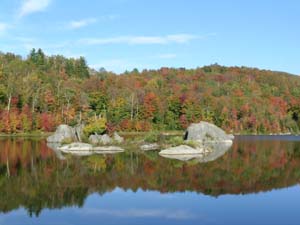
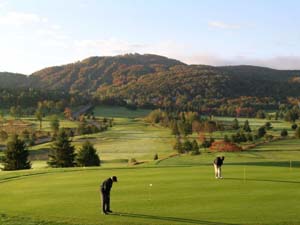
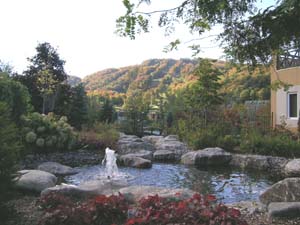
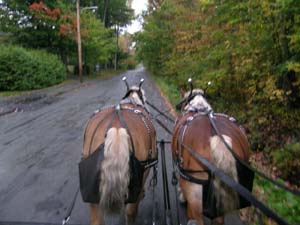
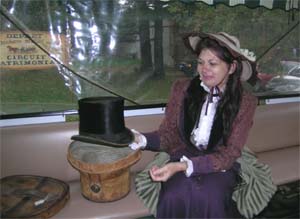
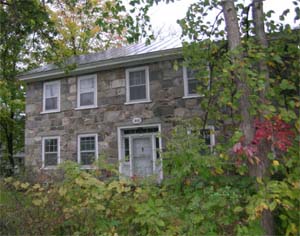
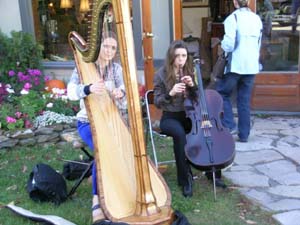
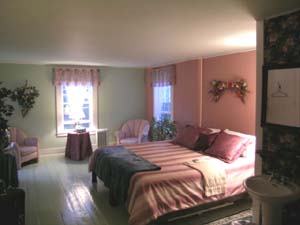
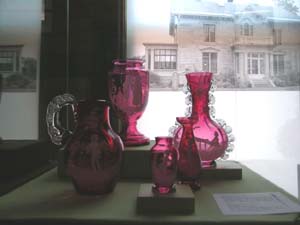
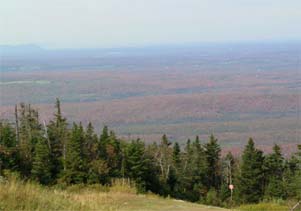
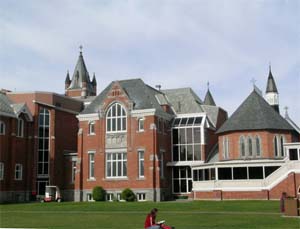
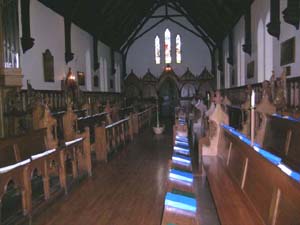
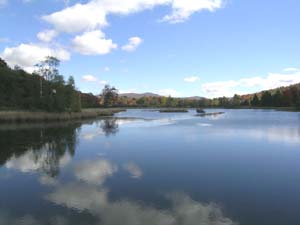
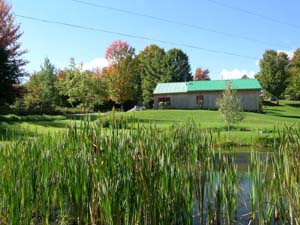
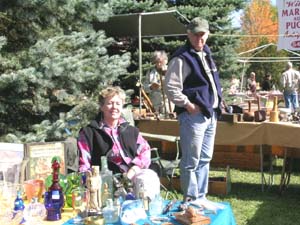
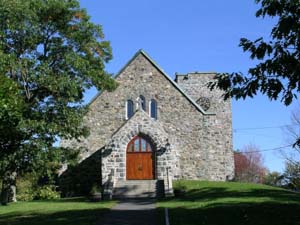

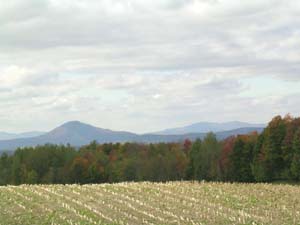
The area was also a stage coach route between Canada and the U.S. and today you can still find evocative and historic hotels and inns that were stage coach stops. The area eventually also became crisscrossed with railways including the St. Lawrence and Atlantic Railroad Company that connected Montréal to Portland, Maine, giving Canadian manufacturers access to a seaport free from ice year-round.
Although the area has large rivers such as the Richelieu and the St. François, it does not have the "major thoroughfare" river system of the St. Lawrence that (like many of our urban centres today) concentrated the populations of the region in closely-packed communities dependent on only one major transportation route. The Eastern Townships instead evolved as a much more eclectic and interdependent/interconnected agricultural, social, and cultural way of life. And it remains so today. Today's visitor to the Eastern Townships does not feel the hypermagnetic pull of major highways (although major autoroutes do give quick access to the area). Instead, the topography, community organization, and lifestyle encourage free and easy travel.
The Eastern Townships might best be described as a lateral web of towns and communities each of which is a separate and distinct nucleus, and together with other nuclear communities, unites the region as a whole. It is an area in which agriculture and industry flourished. Hydro-electric energy from the numerous waterfalls (a major balm and benefit to contemporary tourists in search of the sound of silence) led to the development of textiles, forestry products, mining, and climate-related industries. One of the best examples of the latter is the Bombardier success story. When J. Armand Bombardier invented the snowmobile as an innovative and practical mode of transportation in a province where winter is something you work with (and celebrate), little did he know that he was giving birth to a global enterprise that would eventually manufacture trains, subway cars, and airplanes. A visit to the Bombardier Museum in the Eastern Townships is recommended.
The popular philosophy of "small is beautiful" of the 1960s and 1970s is still very much the mood and modus operandi of the Eastern Townships. And those involved in the travel and tourism industry here know how to accommodate people and groups without sacrificing personal attention; they have learned these skills over a long period of time.
Because landscape is history, the Eastern Townships have evolved to fit the landscape; providing the antithesis of a cookie-cutter travel experience. Here you will find a collection of distinct communities in which an autonomous, entrepreneurial, and independent lifestyle is also highly valued. It is a communicative landscape that engenders casual encounters of the personal kind.
Portraits of the Eastern Townships
As I have suggested above, part of the allure of the Eastern Townships is the direct and personal contacts you make. Here are just a few that made my stay there meaningful.
A budding troubadour:
His name is Richard Messier but half-jokingly he introduces himself as Richard Coeur de lion (the lion-hearted) Messier. It is a fortuitous encounter that begins as a photo op. I am driving by the internationally known Orford Arts Centre which is a major centre for training young musicians and artists "in the utmost harmony with its surroundings." The road passes a meadow in which a young man is wandering, strumming a guitar, and obviously using his surroundings as a "sounding board." I stop, get out of the car, and follow him rather surreptitiously. He is playing a Spanish tune on a mellow acoustic guitar. He does not notice me as he stops on a small bridge. The notes of the guitar blend with the rhythmic rippling sounds of the water beneath the bridge. When he pauses, I excuse myself for invading his privacy but he is more than pleased to share his music with me. He is a traveller himself spending time going here and there and playing music. Currently he is working at the Centre. At my request he plays his version of one of the first folk tunes I learned in Québec (Le Petit Bonheur by Félix Lerclerc) and talks to me about his music. It is the core of his being he says, "It's as if I have a stream flowing throughout my mind and body... my music connects me to all this." I ask him to play some more while I take his picture. I thank him and shaking my hand, he gives me a slight bow. As I walk back across the meadow, the notes of the guitar follow me.
The hôtelier as archivist:
Michelle Richard was born in Trois-Rivières Québec but at the age of 17 went to Toronto where she worked as a bilingual secretary in what she calls "one of those big black buildings." Feeling the need of a challenge, she happened one day on an ad for the Canadian Armed Forces. To make a long story short, Michelle went on to pursue a 27-year career in the medical corps serving in Canada, Germany, and Israel. She was one of the first women to serve in a field environment on an equal basis with male soldiers, as well as in numerous other capacities. When she retired from the military Michelle knew that she "had to validate in civi street what I learned in the military." She was also determined that her three children experience "l'école de la vie" (the school of life) and that they be brought up in Canada's two official languages. With her husband Rémi she bought and opened a B&B in Stanstead Québec called Domaine Lee Farm, an historic property that once belonged to Sir Frederick Banting and Lady Banting. Banting was one of the co-discoverers of insulin and a Nobel Prize-winner for Physiology and Medicine. (As I inform Michelle, he was also my grandmother's cousin.) Michelle and Rémi have restored this 1810 estate in impeccable detail. On the last morning of my visit to the area she takes me to a hill outside town where I take the panoramic shot at the top of this webpage. Standing looking at the magnificent view we are both entranced. And then Michelle says quietly — mainly to herself I think — "Cette terre a vraiment une âme. De ça j'en suis sûre." ("This land has a soul. I'm sure of that.)
A timeless artist:
Shannon Cooney works part-time in what is probably the smallest casino on the continent. The casino is also in an incongruous setting because it is in one of the typical staid, rectangular and columned bank buildings we used to see on every main street in Canada. But Shannon is the quintessential still waters that run deep, and I use the play on words deliberately. He is an artist who has created his own medium which he calls Drunkwood. For more information on Shannon, his art, Drunkwood, and to see samples of his work, go to his website (www.drunkwood.com) by clicking here. Shannon's website itself shows his artistry and imagination.
UPDATE:
Recently, Shannon had his first solo exhibition at the Centre Culturel Yvonne L. Bombardier. It met with great success and media coverage. His memphre sculpture won the public prize.
Also at the First International Sculpture Symposium of Granite of Stanstead at the Museum of Granite, during which nine sculptors working on nine separate blocks of granite (theme “the borders”), Shannon won both the Jury and the Public prizes. Visit www.tomifobia.com for a photo. He sculpted “The birth of an international legend” out of a 6000 pund block of Stanstead Gray granite.The integrated resort experience:
The Eastern Townships are also known for their luxury all-seasons resorts that blend perfectly with the landscape. Scott Stevens is my contact at Château Bromont, one of the most popular resorts in the region. His enthusiasm for and commitment to the Eastern Townships where he grew up in a bilingual and bicultural family is apparent from the moment we meet. He is also the kind of young progressive marketing person who understands intuitively the real principles of the hospitality industry because they are inherent to the Townships. Château Bromont is a property that includes a variety of excellent accommodation, a sparkling new spa, a popular alpine ski hill (and close by several others), a first-class restaurant — and serene golf. After a day touring the Townships I rush back to the Château for a twilight round of golf. I am joined by Karine Turbine, a young agronomist from the Gaspésie region of Québec. As dusk is imminent we are the only ones on the course; it is a golfer's sweetest moment. The cool fall air, the brilliant colours of the hills, and the setting sun on the greens combine to make Karine and me feel like the best golfers in the world. By the last hole, darkness is coming on and we cannot see the last green; we play by sensing the landscape around us. As we hit our balls to the last green, we can't see where they land but we know that the direction is perfect.
(Château Bromont has recently won the prestigious Lauréats Grands Prix du Tourisme, the most important industry competition in Québec.)
Candy Man:
During lunch with Scott, he begins talking about his family, brother Harvey, sister-in-law, their children, and the family farm near Stanstead. I sense another story worth telling; so I make a post-trip contact with Harvey on whose property I have already taken some photographs. Harvey and his wife work "day jobs" but also operate Verger Stevens Orchard where they grow dwarf apples trees, raspberries, blueberries, squash, and pumpkins; and offer agrotourism opportunities. But I'll let Harvey tell the story.
"When we were small children my father and mother would take us on a Sunday drive to a nearby site in the Eastern Townships near the Vermont border. We called it Candy Hill. Along the way, my father would first stop at a store where he would buy soft drinks and chocolate bars and quickly place them in the trunk. On our arrival at Candy Hill, he would find an excuse to leave the car before we could get out. He would then hide the treats and the first order of business for us kids was to find them. This was almost 40 years ago but I can still feel the excitement each time we went to Candy Hill. It was was a very special family time, and of course it did not cost a lot. Candy Hill is still there, about two miles from the family farm that we eventually bought in the area. It is also near where we planted our first apple trees.
Back in 1998 we started planting sections of 500 apple trees and rows of raspberries. Our thinking was that maybe families like ours might come to the orchard, lay out a blanket have some special "Candy Hill time" with their loved ones. Today we see many families on blankets in the orchard admiring the mountains and the villages of Stanstead and Derby Line Vermont, both of which are clearly visible from our property. The apples are fifty cents a pound, the view of the mountains free, and I hope the memories are priceless. As a new feature this year we now have a wagon ride to the orchard and on Sundays a treasure hunt in the maplegrove to find "the lost treasure of an old hermit called Luke." (That's a whole other childhood story!) As an added bonus for us, we are fortunate enough to have brothers and sisters, in-laws, aunts and uncles and a miraculous Mom all who, along with their children, help us out during raspberry and apple season. The second generation of Candy Hillers carries on the tradition.
Transferrable skills:
Signy Stephenson and Michel Gabereau left impressive careers in business, publishing, and public relations in Toronto to operate the Auberge Knowlton, an 1849 inn and the first such establishment to offer food, beverages, and accommodation in the Eastern Townships. Their professional acumen and business talents are excellent examples of the kind of "transferrable skills" that the marketplace in the 21st century requires. The Inn and its restaurant have been faithfully restored and renovated; this is a place for people to gather. The ambiance is pure Cantons de l'Est especially on the day I arrive when the fall Duck festival is in full swing. (If you order duck in Paris, chances are it came from this area which is considered one of the best duck producing areas in the world.) Signy and Michel introduce me to friends who all seem to be on their way somewhere but en route are passing by or through the inn. The streets are full of visitors, musicians, artisans, and the residents of Knowlton. Knowlton is known for the super friendly dogs in the town's businesses. Actually there is a competition in the spring when clients get to vote for the most accommodating dog. Among other dogs I meet, I would vote for Henry if I could. He likes to mind the till in the shop next door to the Auberge Knowlton.
Values training:
In another spontaneous conversation (this time in the town of Magog on Lake Memphrémagog) I talk with Olivia Sofer and her mother. Very sportive as a young child, Olivia became an outdoors enthusiast and skier. She says that the Eastern Townships gave her "the taste for the realm of possibilities that could exist at a ski hill." As a certified hiking guide and member of the Association of Canadian Mountain Guides, she has taken the skills she learned in Québec to the Canadian Rockies, and beyond. A guide now in the sports tourism field for 12 years, she has worked in some of the most remote wilderness areas of Canada. She is also devoted to travelling and learning about other cultures, especially about the role of women in other cultures. Her degrees in Economics and Political Science and in International Trade and Transportation complement her world view. If you have look at Lifexport and Las Mujeres de Las Montanas: Understanding Women's Passion for the Mountains - A Cultural Comparison you will get a pretty good idea where this remarkable woman is "coming from."
Tangible history:
Doug and Richard Eldridge are direct descendants from Robert McGinnis, a United Empire Loyalist, and certified members of the United Empire Loyalists' Association. After my visit to the Eastern Townships, Doug very kindly sends me a copy of his UEL certificate on which it says (in part), "N.B. Those Loyalists who have adhered to the Unity of the Empire, and joined the Royal Standard before the Treaty of Separation in the year 1783, and all their children, and their Descendants by either sex, are to be distinguished by the following Capitals affixed to their names U.E. Alluding to their great principle The Unity of the Empire."
I meet Doug and Richard at a flea market where I buy two simple hand-blown brilliant blue vases. Doug is displaying his antique tools. They are fascinating and tangible evidence of past generations in the area. There is something very evocative about these tools that have passed through so many hands, hands that worked the land here. Both brothers are passionate about the Loyalist history and their part in it. Doug says, "[Learning about our history] made me feel better as a person ... knowing where I had come from." With reference to the fateful decision that their ancestors must have made Richard says, "It's a case of how you feel inside ... and when a division is made, you have to take one side or the other." When I ask him what he thinks Americans should know about his family's history he says, "They should know we have a connection with them. We were once all British subjects."
Intrinsic value:
Sylvain Roy also left the big city to return to the Eastern Townships. He now is the proprietor of a florist and gift shop just steps from the Vermont border. It is towards the end of the day and most of the border crossing business has slowed down. Actually I think he is as interested in talking to his visitors to Canada as much as selling his very eclectic and fanciful wares. He is often the first Canadian (other than border officials) that visiting Americans meet and he welcomes them as personal friends. But Sylvain lets me in on a secret. If you look closely at the front of his shop you will notice a raised part of the building at the back. The store is the old town's original movie house. Sylvain takes me through a steel door at the back of the shop where I find the original stage and a few original theatre seats. Sylvain has partially restored the theatre and created a black light stage set that looks like a a mini Broadway musical set. Sylvain lends the space occasionally to friends and family for informal functions. When I ask him why he has gone to so much work he says, "Whether anyone sees it or not, it's just something I felt I should do."
A transborder librarian:
Like her mother before her, Kim Prangley is the librarian of a unique library and chief custodian of the opera house upstairs. This is The Haskell Free Library and Opera House, an historic structure that straddles the U.S-Canadian border in Derby Line, Vermont and Stanstead, Québec. Although it has become a rather famous tourist site — people come from all over the world to stand with one foot in each country (apparently a very poignant experience for people from countries like Germany) — it is still the local library. In addition it must serve the needs of a very special transborder community. For the full history of this fascinating site, click on the above link; but permit me to mention a few details.
Inside the library there is a black line painted on the floor which bisects both the library and the opera house upstairs at an oblique angle. (This line is there because the building is insured by both an American and a Canadian insurance company and it must be clear which part of the building is covered under each policy.) If you are in the Reading Room next to the windows with their stained glass decoration, perhaps reading Margaret Atwood's Oryx and Crake, you are in the United States. But if you sit on the comfortable couch in front of the fireplace to read the New Yorker magazine, you are in Canada. And if you plan to have your wedding in the opera house upstairs (as many do especially if relatives are not admitted to either country for whatever reason) you should know that the stage is in Canada and most of the seats downstairs as well as the entire balcony are in the United States. So if you are married on the stage, your marriage is subject to Quebec laws.
The Haskell Library and Opera House is a peaceful place; a place for reading, studying, and quiet reflection. It's the perfect spot to end your visit to the Eastern Townships.
Recommended resources
When planning a visit to the Eastern Townships, begin with the excellent website of The Eastern Townships Tourism Association. All the first resources you will need are provided here. Note the all-seasons and getaway packages available.
The Eastern Townships Tourism association also provides many excellent print guides including its Official Tourist Guide, brochures on its famous spas, museums, superb golf courses, resorts, inns, B&Bs, country restaurants, antique hunting, wine routes and many other activities — all within an area that can be traversed comfortably in any direction in about two hours.
Worthy of special mention are the individual and thematic itineraries that are prepared for different areas of the Townships. But be forewarned; you might just find yourself wandering at will for much longer than you had expected.
